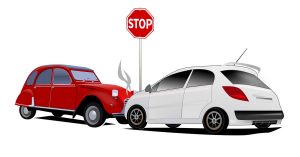• Car year/model/condition
Everyone would love to drive a new, expensive car; however, the total cost of having such a car needs to be determined before making the purchase. Vehicle insurance for a new car could require an extended policy that an older vehicle might not, such as collision or comprehensive coverage. Many car dealerships offer a service contract to pay for repairs based on the amount of time and mileage the car has been driven. Gap insurance can protect the policyholder in the event the amount owed on the car exceeds the total amount of damage. In this case, the gap insurance would pay off the car loan. Always get some vehicle insurance quotes before buying a new car.
As your car begins to age, due to time and normal wear and tear, it might not be necessary to carry as much coverage as when you first started out. Consider whether the expense of paying for collision and comprehensive coverage outweighs the retail value of your car. One good way of determining the value of your car is to check the Kelley Blue Book to find vehicle pricing and information.
Vehicle insurance for luxury and sports cars is obviously much more expensive than a four-door caravan. When purchasing insurance, it is wise to compare insurance rates and policies and make sure your investment is based on need.
• State requirements
In order to make the roads safer and provide protection to drivers, passengers, and pedestrians, states have established minimum insurance vehicle insurance limits. These coverage limits are mandated by law and represent legally binding terms of an agreement and compensatory awards to another party should you be the cause of an accident.
Although state requirements do not adequately reflect current economic and demographic changes on the road, they do provide somewhat of a safeguard and protection on the road. Policyholders can increase the amount of their insurance beyond what a state requires, and purchase supplemental policies for added protection. States impose heavy fines, license or registration suspension or revocation, or even jail time for drivers on the road without insurance. Some states, such as California and New Jersey, have gone as far as denying uninsured drivers compensation for pain and suffering if they are injured while operating a motor vehicle.
If you are trying to buy the insurance and are having a hard time finding a company to insure you, you can check with your state vehicle insurance plan. Because states require vehicles to be insured, they have designed a plan to provide insurance to individuals who cannot get it from private companies. State insurance tends to be more costly with fewer options, so explore this alternative if you are presented with no other choice.
• Budget for monthly/quarterly premiums
Buying vehicle insurance is an expense, and shopping around to find the best pricing and policies is highly suggested. Determine how much protection you need based on liability coverage and whether collision and comprehensive insurance is a consideration. These types of insurance do require a deductible if you file a claim, which means there would be an out-of-pocket expense before you are reimbursed. If you choose a higher deductible, the monthly cost of your insurance premium would be lower; however, you should balance this savings against your ability to absorb a larger out-of-pocket expense.
For example, if your deductible is set at $1,000 and your damages total $1,500, you would pay $1,000 and your insurance company would pay $500. In order to keep your monthly or quarterly premiums low, you should be prepared to select a higher deductible. Of course, coverage is limited to the terms and conditions contained in the policy.
Some states have been experimenting with a “pay-as-you-drive” insurance plan. The premium the insured would pay would be based on the number of miles driven. This insurance could provide an affordable alternative to accommodate the needs of the unemployed and address the problem of uninsured drivers.


